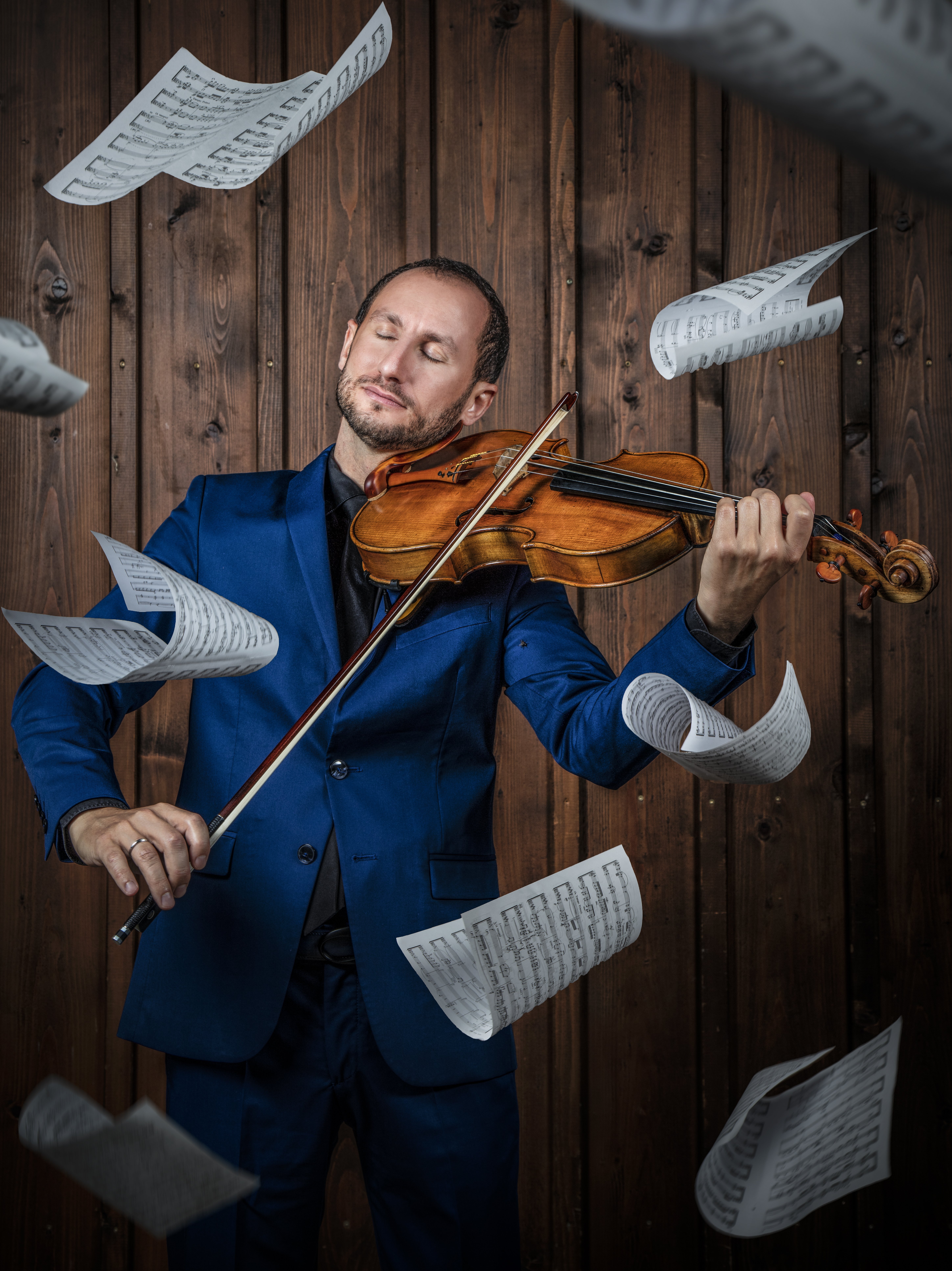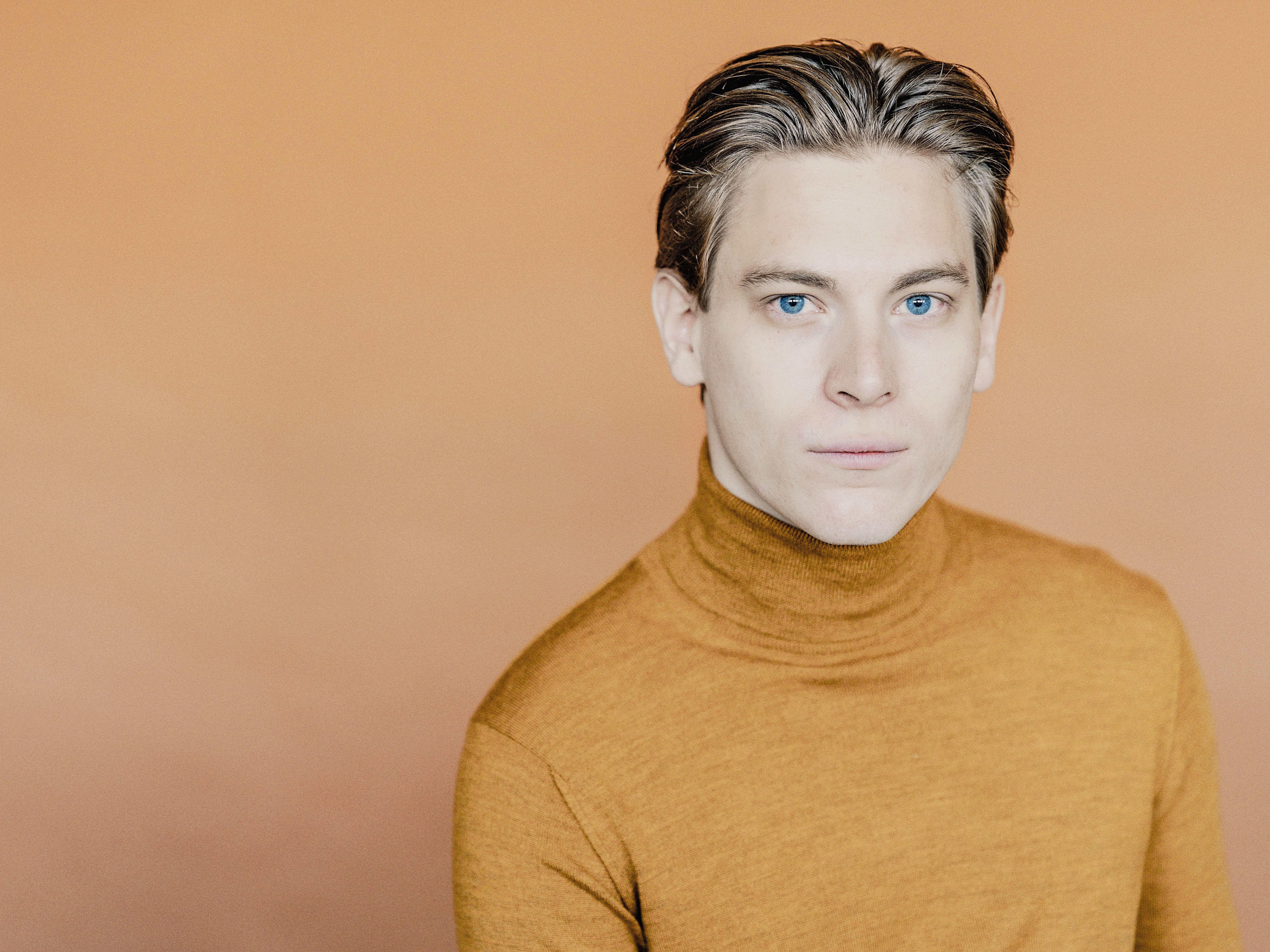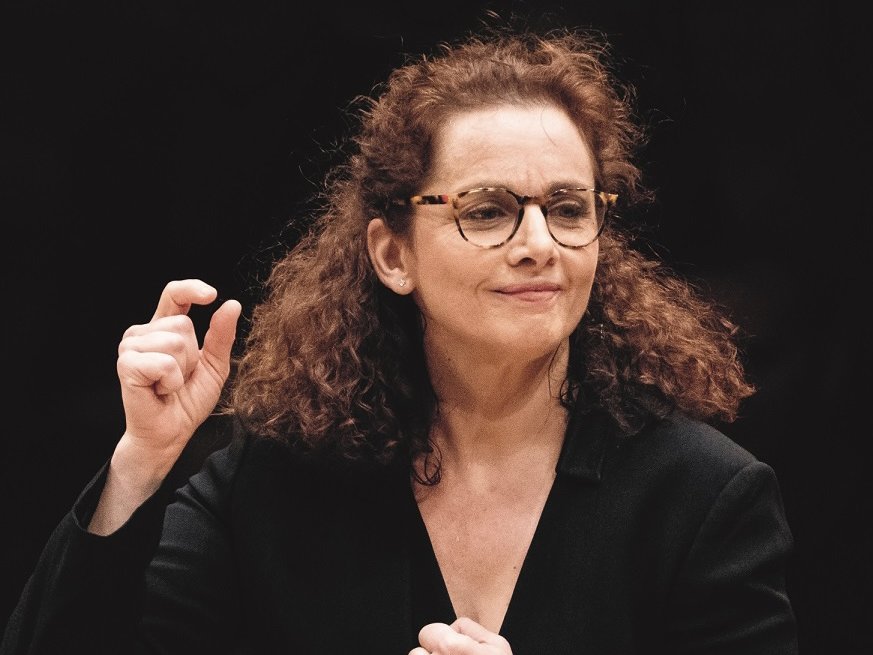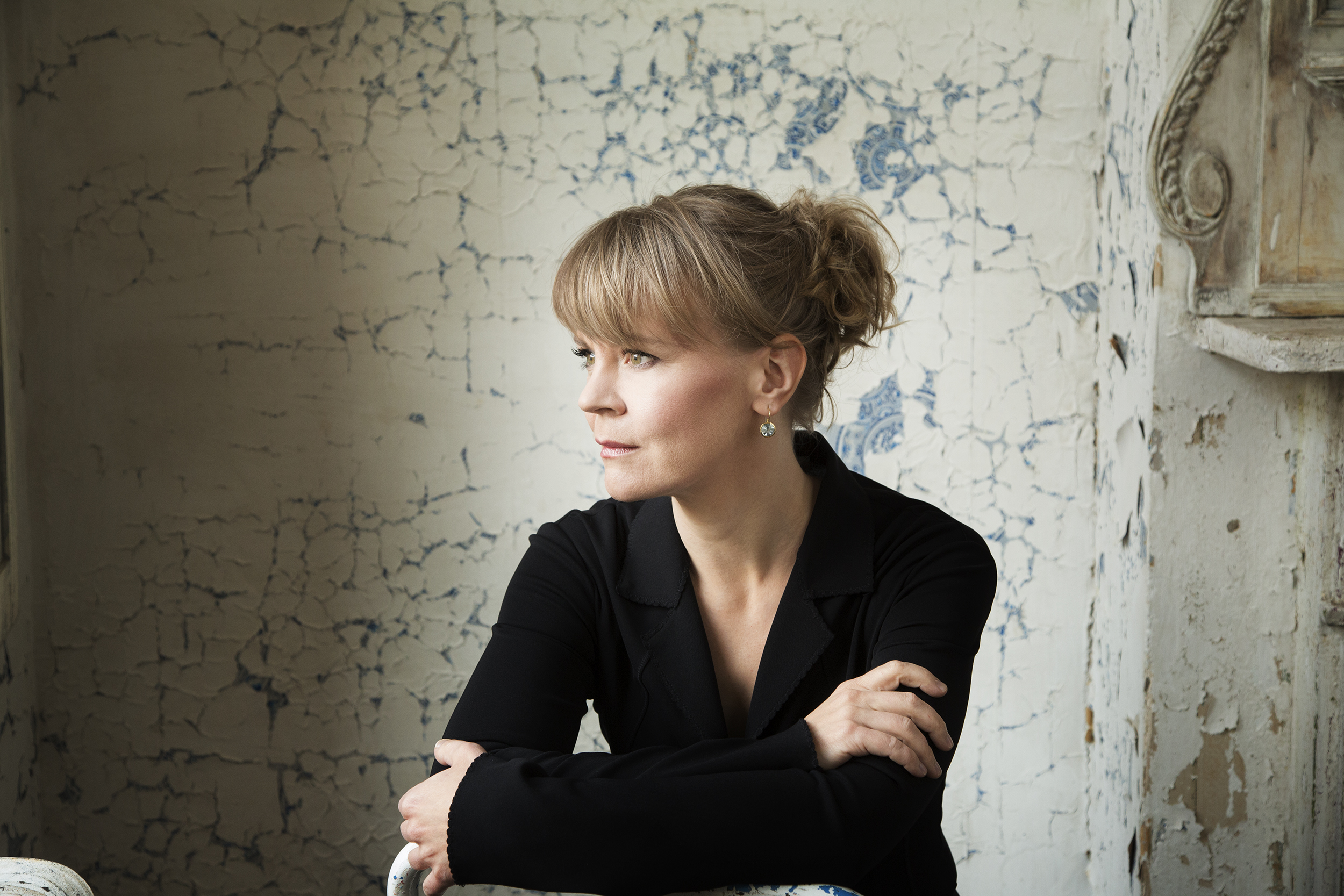- Portrait

44-year-old violist Antoine Tamestit has been acclaimed for his warm, richly-coloured tone. In Jörg Widmann’s Viola Concerto, which is dedicated to Tamestit, the former student of Tabea Zimmermann has the opportunity to present his instrument from a completely different tonal perspective – percussive, fierce, jolting.
Perhaps he should have stayed with the violin. If Antoine Tamestit had become a violinist, he would surely have been able to make his debut with the Berliner Philharmoniker years ago. Violin concertos are on the orchestra’s programmes frequently, and anyone who is as highly decorated with awards as the Frenchman, who was born in 1979, would almost certainly have appeared as a soloist already. Since Tamestit decided on the viola after four years of violin lessons, however, it simply a bit longer – the number of orchestral works with solo viola is limited. But now, after two decades in the top tier of the international orchestra business, he can finally look forward to his debut with the Philharmoniker. With a work that was composed specifically for him and his seemingly boundless abilities as a virtuoso, musician and performer: the Viola Concerto by Composer-in-Residence Jörg Widmann.
A fortunate decision
Tamestit does not regret choosing the viola as his instrument for a single moment. It happened when he was nine years old and heard a recording of Johann Sebastian Bach’s Suites for solo cello by his countryman Paul Tortelier. What a warm, dark, deep sound! It was quite different from the small, three-quarter-size violin that he had to practice on every day. Yet when he tried out the cello himself, young Antoine didn’t feel comfortable with it. The viola offered a wonderful compromise: he could continue the familiar playing position, but at the same time gain registers and colours, such as the much-vaunted “viola chest tone”, that would have remained inaccessible to him on the violin.
Tamestit finds the sound of the viola especially “human”: “It’s like a native language to me; it feels comforting, and goes straight to the heart.” The fact that, as a violist, he cannot call the tune, in the figurative sense, doesn’t bother him at all – on the contrary, he says: “We are simply different; we’re the middle voice. One can compare us to normal people, and that gives us a certain lightness. We’re more relaxed than the others.” He is not alone in his penchant for the instrument. “Bach also loved the viola and played it, as did Mozart and Schubert. They all composed very beautiful viola parts for their orchestral works and chamber music. The viola was central for them: the heart of the music.”
There are few musicians who are as versatile as Antoine Tamestit – to categorise him merely as a virtuoso would clearly be inadequate. His repertoire ranges from Telemann to the present, his expressive palette from celestial beauty to noise art and performance. His openness may also have something to do with his background. Tamestit’s grandparents came from Sephardic Jewish families; they lived in the Maghreb, one half in Morocco, the other in Algeria. Tamestit was born in Paris, where his father, Gérard Tamestit, was a violinist and composer.
Music was ever-present in their home, music of all kinds: from Pergolesi to Berio, from Bach to Mahler, from Ravel to Jacques Brel. When Antoine was five, his father began giving him violin lessons. Jean Sulem introduced him to the fundamentals of technique at the Paris Conservatory. Tamestit explored the secrets of tone and expression with Jesse Levine at Yale University, and Tabea Zimmermann taught him the subtleties of concert practice at the Hanns Eisler School of Music in Berlin. He still admires her more than anyone else, and is enthusiastic about the elegance and refinement of her playing.
A young savage
When one reads the list of international awards that Antoine Tamestit has won since 2000, none of the major competitions are missing. The Primrose Viola Competition is there, as are the Young Concert Artists Auditions in New York and the ARD Music Competition in Munich, which he won in 2004. The BBC selected him as a “New Generation Artist”, and the Dortmund Konzerthaus awarded him a three-year residency as a “Young Savage”. Although he is no longer young by now, he is still a wild artist, Tamestit admits, because he loves to experiment. Sometimes he gives a surprise concert, at which the audience doesn’t know what is coming. Sometimes he plays in the dark and only leaves the lamp on the music stand on: “That results in a completely different way of listening.”
Most notably, however, Tamestit often leaves the traditional position of the soloist between the first violins and the conductor’s desk. When he played Berlioz’s Harold in Italy with John Eliot Gardiner in Munich and Paris, he roamed freely around the stage. At the beginning, Tamestit stood upstage left next to the harp, played a duet with it – like a dialogue in a play, or chamber music. Then he strolled through the entire orchestra, just like Lord Byron’s hero Harold, who wanders through Italy, marvelling at the changing landscape. The viola part, says Tamestit, comments on the impressions the hero has gained. In this form of presentation, Berlioz’s Symphony with viola solo takes on astonishing evocative power and enchanting poetic charm.
Self-Discoveries
He is taking another giant step with Jörg Widmann’s Viola Concerto, which will be heard at his Philharmonie debut in January 2024. Widmann tailored the work specifically to Tamestit’s remarkable qualities as a performer. “Before Jörg composed the concerto, we had already played chamber music together for eight years, and realised that we speak the same musical language,” Tamestit recalls; he compares the work to a form of self-discovery. “Jörg knows that we violists are always seeking a direction in music. We don’t know whether we’re chamber musicians or soloists, whether we want to play recitals or with orchestra. In the end, I find a way between Romantic and contemporary music with the strings. I like that very much.”
On the way to the goal, Tamestit must first conquer his instrument. During the first ten minutes, he cannot play on the strings with the bow; initially, he taps on the chin rest. Then he discovers the pizzicato, and only after that does a bowed note follow, soft and tentative. On his journey through the orchestra he can gesticulate in the air with his bow and duel with the tuba; at the climax of the music he even has to sing and shout. “I really have to do a lot,” Tamestit admits, confessing that it is not easy to walk around and navigate virtuoso passages at the same time.
Whether Mozart, Berlioz or Widmann: Antoine Tamestit interprets all of them on his “Mahler” Stradivarius from 1672, probably the most famous viola in the world, and the first by the legendary Italian instrument maker. The Swiss Habisreutinger Foundation loaned it to Tamestit in 2008, and he is well aware of his responsibility: “My Stradivari is a work of art, like a painting by Leonardo da Vinci. But it is also my daily work tool.” Thus, he cannot be too timid and cannot constantly think about the 40 million US dollars or more that his instrument would probably bring today at an auction. But he knows one thing for certain: “This viola surprises me again and again. It makes me think that there are two of us on the stage. It is a symbiotic relationship, like a happy couple. I go in the direction that it suggests, and at the same time it follows me. During the final applause, I always thank it with a bowing motion, since it is the viola that makes the sound – with a little help from me, of course . . .”

Klaus Mäkelä, the Man Who Knows No Fear
In April, the Finn Klaus Mäkelä makes his debut with the Berliner Philharmoniker with works by Tchaikovsky and Shostakovich.

“It’s never enough, it can never be too much”
The conductor and harpsichordist Emmanuelle Haïm is one of the leading protagonists of early music. Portrait of a baroque icon.

A beautiful give and take
Portrait: The conductor Susanna Mälkki